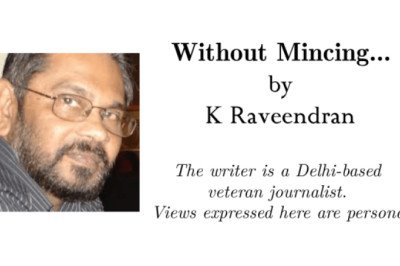
views
To judge from the editorial pages and Capitol Hill currents that both shape and reflect Washington’s perceptions of the world, the doomsayers sounding alarms over the risk of direct military conflict between the U.S. and Russia over Ukraine have been proved wrong. Despite many Russian warnings and much nuclear saber-rattling, the United States has managed to supply advanced artillery systems, tanks, fighter aircraft, and extended-range missiles to Ukraine without an existential contest—or even significant Russian retaliation.
For Washington’s hawkish chorus, the benefits of providing increasingly greater lethality to Ukraine outweigh the dangers of provoking a direct Russian attack on the West. They insist that the U.S. not allow fears of an unlikely Armageddon to block much-needed aid for Ukraine’s defense, particularly now that battlefield momentum has swung toward Russia. Hence the White House’s recent decision to green-light Ukraine’s use of American weapons to strike into internationally recognized Russian territory and its reported deliberations over putting American military contractors on the ground in Ukraine.
Read More: Inside Ukraine's Plan to Arm Itself
There are several problems with this reasoning. The first is that it treats Russia’s redlines—limits that if crossed, will provoke retaliation against the U.S. or NATO—as fixed rather than moveable. In fact, where they are drawn depends on one man, Vladimir Putin. His judgments about what Russia should tolerate can vary according to his perceptions of battlefield dynamics, Western intentions, sentiment inside Russia, and likely reactions in the rest of the world.
It is true that Putin has proved quite reluctant to strike directly at the West in response to its military aid for Ukraine. But what Putin can live with today may become a casus belli tomorrow. The world will only know where his red lines are actually drawn once they have been crossed and the U.S. finds itself having to respond to Russian retaliation.
The second problem is that by focusing narrowly on how Moscow might react to each individual bit of American assistance to Ukraine, this approach underestimates the cumulative impact on Putin and the Kremlin’s calculations. Russian experts have become convinced that the U.S. has lost its fear of nuclear war, a fear they regard as having been central to stability for most of the Cold War, when it dissuaded both superpowers from taking actions that might threaten the other’s core interests.
A key question now being debated within Russia’s foreign policy elite is how to restore America’s fear of nuclear escalation while avoiding a direct military clash that might spin out of control. Some Moscow hardliners advocate using tactical nuclear weapons against wartime targets to shock the West into sobriety. More moderate experts have floated the idea of a nuclear bomb demonstration test, hoping that televised images of the signature mushroom cloud would awaken Western publics to the dangers of military confrontation. Others call for a strike on a U.S. satellite involved in providing targeting information to Ukraine or for downing an American Global Hawk reconnaissance drone monitoring Ukraine from airspace over the Black Sea. Any one of these steps could lead to an alarming crisis between Washington and Moscow.
Underlying these internal Russian debates is a widespread consensus that unless the Kremlin draws a hard line soon, the U.S. and its NATO allies will only add more capable weapons to Ukraine’s arsenal that eventually threatens Moscow’s ability to detect and respond to strikes on its nuclear forces. Even just the perception of growing Western involvement in Ukraine could provoke a dangerous Russian reaction.
These concerns undoubtedly played a part in Putin’s decision to visit North Korea and resurrect the mutual defense treaty that was in force from 1962 until the Soviet Union’s demise. “They supply weapons to Ukraine, saying: We are not in control here, so the way Ukraine uses them is none of our business. Why cannot we adopt the same position and say that we supply something to somebody but have no control over what happens afterwards? Let them think about it,” Putin told journalists after the trip.
Last week, following a Ukrainian strike on the Crimean port of Sevastopol that resulted in American-supplied cluster munitions killing at least five Russian beachgoers and wounding more than 100, Russian officials insisted that such an attack was only possible with U.S. satellite guidance aiding Ukraine. The Foreign Ministry summoned the U.S. ambassador in Moscow to charge formally that the U.S. “has become a party to the conflict,” vowing that “retaliatory measures will definitely follow.” The Kremlin spokesperson announced that “the involvement of the United States, the direct involvement, as a result of which Russian civilians are killed, cannot be without consequences.”
Are the Russians bluffing, or are they approaching a point where they fear the consequences of not drawing a hard line outweighs the dangers of precipitating a direct military confrontation? To argue that we cannot know, and therefore should proceed with deploying American military contractors or French trainers in Ukraine until the Russians’ actions match their bellicose words, is to ignore the very real problems we would face in managing a bilateral crisis.
Unlike in 1962, when President John F. Kennedy and his Russian counterpart Nikita Khrushchev famously went “eyeball to eyeball” during the Cuban missile crisis, neither Washington nor Moscow is well positioned to cope with a similarly alarming prospect today. At the time, the Soviet ambassador was a regular guest in the Oval Office and could conduct a backchannel dialogue with Bobby Kennedy beyond the gaze of internet sleuths and cable television. Today, Russia’s ambassador in Washington is a tightly monitored pariah. Crisis diplomacy would require intense engagement between a contemptuous Putin and an aging Biden, already burdened with containing a crisis in Gaza and conducting an election campaign whose dynamics discourage any search for compromise with Russia. Levels of mutual U.S.-Russian distrust have gone off the charts. Under the circumstances, mistakes and misperception could prove fatal even if—as is likely—neither side desires a confrontation.
Pivotal moments in history often become clear only in hindsight, after a series of developments produce a definitive outcome. Discerning such turning points while events are in motion, and we still have some ability to affect their course, can be maddeningly difficult. We may well be stumbling toward such a moment today.
https://time.com/6994227/russia-us-ukraine-crisis/

























Comments
0 comment